Why?
Combustible fencing often contributes to home loss during a wildfire.
Once the fence catches fire:
- Radiant heat from the burning fence cause the house siding to ignite or windows to fail.
- The burning fence generates embers and larger fire-brands that get blown against the home and lead to ignition.
- The fence acts as a fuse, drawing fire into direct contact with the home.
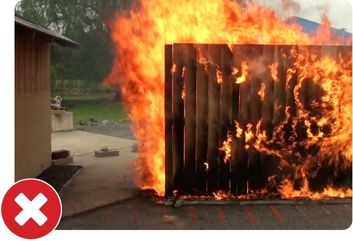
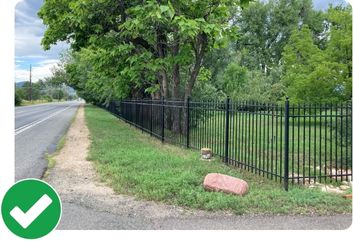
How?
There are several strategies that can help mitigate the risk of having a wood fence.
- Use noncombustible material instead of wood for the entire fence.
- Use noncombustible material for at least the first five feet of fencing that directly contacts your home.
- If replacing only some of a wood fence, work with your neighbor to maintain a noncombustible surface within 2 feet of all wood sections. Remove wood mulch and kindling fuels like dry weeds, leaves, pine
needles and debris.
What?
- Fully noncombustible fencing material is best! This would include metal, masonry, and fiber cement materials.
- Composites have been found to perform worse than wood for ignition potential and flame length in some laboratory tests.
- Field applied fire-retardant paints or stains are not a good long-term solution based on IBHS and NFPA research.
BEST: Noncombustible Fencing
Includes materials like masonry, stone, iron, brick, rock, and steel-on-steel.

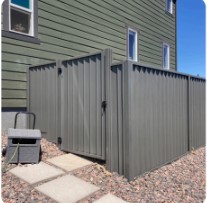
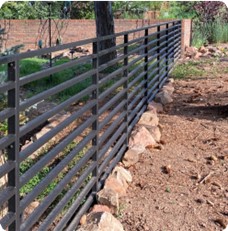
Steel on wood framing is an acceptable low risk option.
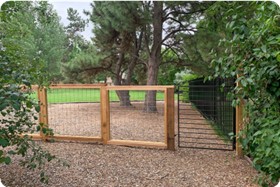
Fencing materials like vinyl and hard plastic composite are combustible and NOT eligible for Boulder County rebates. Check with your local municipality if rebuilding an entire fence for local code.

Do You Know?
Your fence might not touch your own home, but may still be posing a threat to your neighbor’s home or to outbuildings on either property.
Work with what you have:
If you can’t afford to change out the entire fence, start by retrofitting each section within at least 5 feet of your home. 8-10 feet is better!
Maintain a clean noncombustible surface along the entire length of your fence, and work with your neighbors if possible so that both sides of the fence are free of kindling fuels like dry weeds, leaves, and debris against wood.
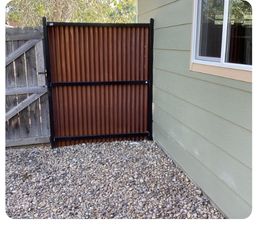 Wood-Steel-Siding
Wood-Steel-Siding
